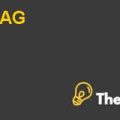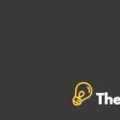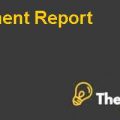Running Header:A New Hedge Fund Case Solution
General Approach, Key Strategy and relative performance
The market is not perfectly efficient, however, in reality, the market is chaotic, irrational and in times, downright inefficient. The experienced investors know that the market is highly diverse, irrational and dominated by greed and fear, where the prices rise too high on good new and declines too low on bad ones. However, to start a fund, the fund manager should have excellent connections with institutional investors and should employ an efficient team. Furthermore, they should have a proven track record to increase the investors or unit holders’ confidence. The fund manager could use Equity hedge strategy referred to as long/short equity. However, to effectively formulate equity hedge strategy, the manager should, before implementing it, assess the macro and microeconomics conditions and determine the systematic and unsystematic risk in the market. The unsystematic risk exhibits the risk faced by the operations of the companies in the market and systematic risk exhibits the risk generated from the governmental monetary policy and inflation rate. It, however, was identified that unsystematic risk can be controlled or averted through in-depth market research and the company’s analysis however, the systematic risk could not be controlled as it was based on macroeconomic factors. In addition to this, after the manager had assessed the markets condition and identified its inefficiencies, the equity hedge strategy could be used, which would enable the fund manager to purchase the stocks if he feels that they are undervalued and would probably appreciate in the future or short sell the stocks if it is determined that they are overvalued and would depreciate in the future. Furthermore, the lower cap would benefit the fund manager and its unit holder by exploiting the market downward trend assessed and the upper cap would benefit by exploiting the upward trend of the market.
Trading Strategy
The fund manager could implement various trading strategies to give benefit to its unit holders including Day trading, an active trading style, in which which the fund manager would buy or sell securities and assets in the same day, where the positions are closed out within the same day they are taken. Similarly, no positions are held overnight as it would reduce the risk of long-term fluctuations in the stock prices. However, the lower cap would control and limit the decrease in stock price by a specific amount in a day, whereas, the upper Cap would also limit the earning by a specific amount in a day.
Moreover, the fund manager could employ position trading, which is a buy and hold strategy and is considered non-active trading for inexperienced traders. However, it could be used as active trading for advanced traders, where they use longer-term charts from daily to monthly assessing the market direction and trend with other methods. Additionally, the trading activity may last for several day or weeks depending upon the market trend. The fund manager should evaluate the successive higher highs and lower highs to effectively determine the trends of the securities, which would enable the fund manager to benefit from both the upward and downward movement of the market. However, if the trend changes, then it should result in the manager exiting the position.
Portfolio Construction
The fund manager should construct a hedge fund portfolio combined with the flexibility that allows him to generate Alpha to evaluate the earning of the company and Beta to determine the level of risk faced by that company. Furthermore, an efficient and well-resourced hedge fund research team should be employed to conduct analysis of the companies under consideration for its portfolio construction. Moreover, the fund manager should evaluate the strategies and styles of those companies to add value to its estimation, which, in turn, could enable the fund manager to establish an initial portfolio that would meet the client’s objective.
Running Header A New Hedge Fund Harvard Case Solution & Analysis
Re balancing Procedure
The fund manager should use re balancing procedure to align the weightings of the portfolio of its assets. However, it involves periodic purchase or sale of assets in the portfolio to maintain a desired level of assets apportionment as well as to ensure that the desired level of risk is maintained in the portfolio...........
This is just a sample partial case solution. Please place the order on the website to order your own originally done case solution.











